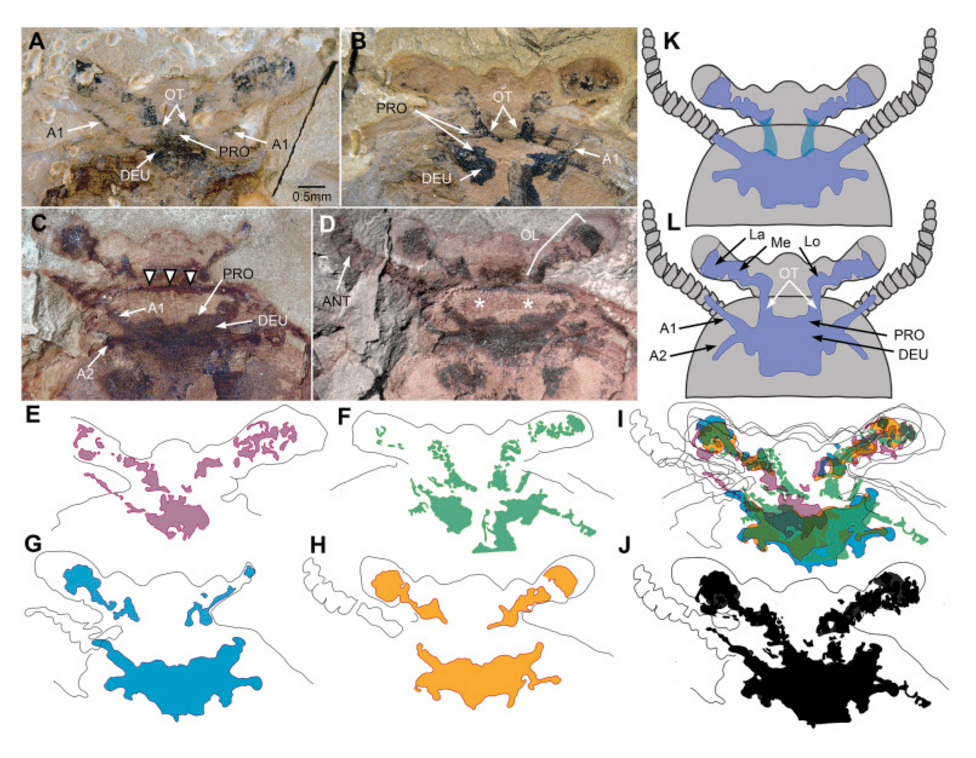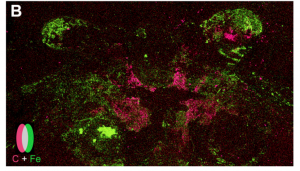Carbon film preservation of an arthropod fossil brain from 500 million years ago

from Ma et al.; source
Above is an image from Ma et al., a paper with new data from a fossil of the arthropod Fuxianhuia protensa, which is from the Maotianshan Shales in the Yunnan province of China. The authors were interested in the mechanism by which traces of this insect’s brain may have been preserved in fossil form.
Since the carbon and iron depositions that make up the specimen are non-overlapping, the authors are able to tell that both carbon film compression and pyritization contributed independently to the preservation of the neural structure of this insect.

from Ma et al.; source
More generally, is interesting to speculate about what information could still be learned from the brain of this fossil. The authors already used this specimen as evidence to corroborate that the F. protensa brain is tripartite. This makes it similar to existing CNS schemas and thus interesting from an evolutionary perspective.
However, imagine that the entire genome sequence of F. protensa were known and a near perfect model of how its neural system usually developed had somehow been established. Even in that case, the amount of information present in this fossil would almost certainly be far too little to build even a rudimentary model of the information in this particular insect’s brain. There would be too few data points, and many millions, if not billions or trillions, of parameters to constrain.
That makes this is a practical example of a brain that has been preserved by highly lossy methods, such that almost all of the information that was once encoded in this insect’s brain — its memories, tendencies, injuries, etc — is now lost to the world.







